https://www.youtube.com/watch?v=IvERuXW2_I4
How to play Star Trek Tridimensional Chess
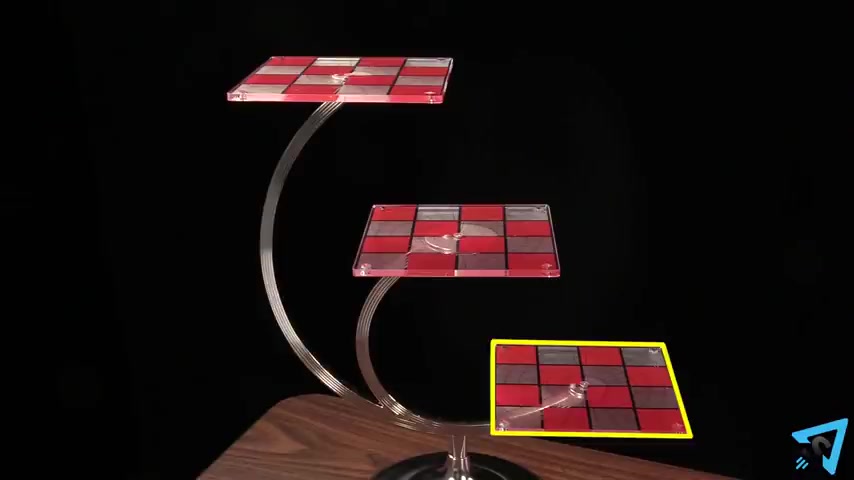
Star trek tri dimensional chess .
How to play the rules are the same as regular chess except for these changes for a refresher of those rules check out this video .
The bottom level board is whites board and the top level is blacks board .
The middle level is the neutral board .
The three levels are suspended one above the other and horizontally offset by half their width .
So that half of the squares on any board are directly over or under half of the squares on the next level above or below it .
This layout may not always be visually perfectly achieved , but this is how they officially overlap .
You can remember that squares line up by color .
The small movable platforms are called attack boards .
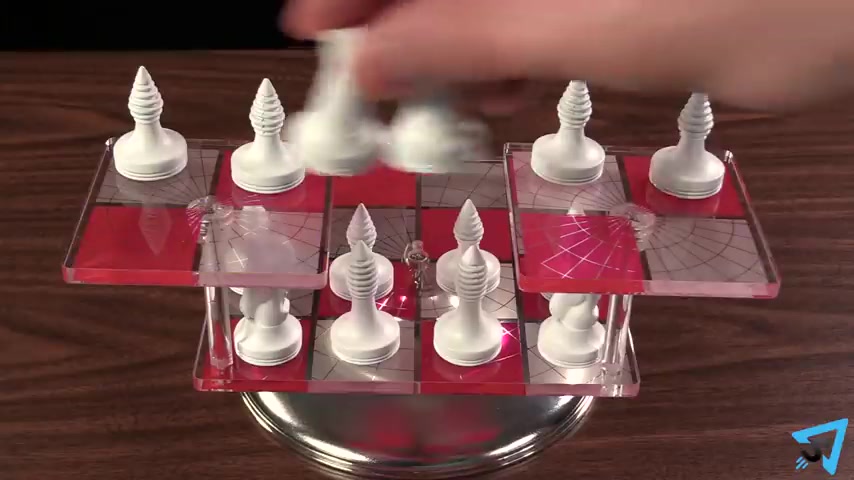
The attack boards are placed on the rear pin positions of the white and black boards oriented so that the corner colors match indicating which squares overlap set up whites , pawns on the second row of both their main board and attack boards on white's main board on the closest row set up knight bishop bishop night on the attack boards , place rooks on the rear outer corners , the queen on its matching color and the king on the other mirror this setup for black on your turn .
Instead of moving a piece , you may move an attack board to move an attack board .
It must be occupied by exactly one piece , whichever player's piece occupies the attack board .
That player has the ability to move it .
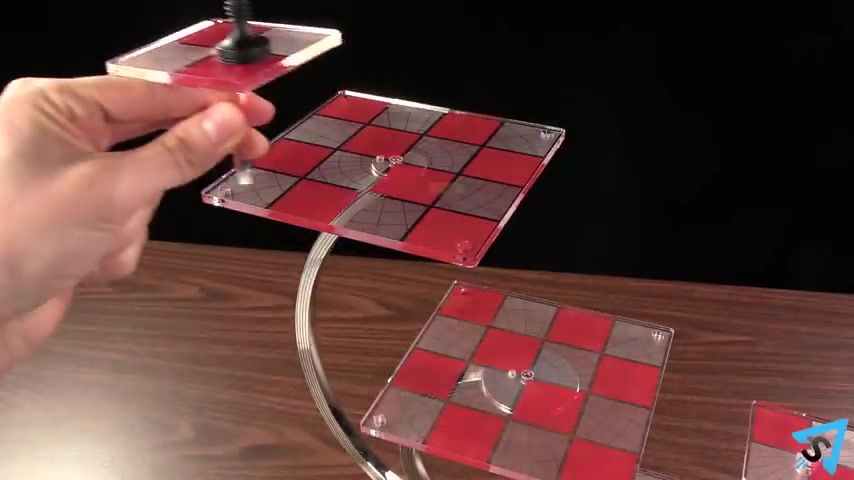
An attack board can move to another pin on the same row or column of its current board or it can move vertically to a pin on a board above or below it .
When moving vertically , it moves to the closest pin .
If there is a tie for the closest pin , then you may pick which pin to move to .
When you move an attack board , you may also rotate it 180 degrees .
If you want .
If you do be sure that the overlapping colors from the boards above and below , it still match whatever pieces on it rotates with the board , you may not move an attack board to the same pin as another attack board and you may not rotate an attack board without moving it to another pin .
All pieces have their normal chest movement .
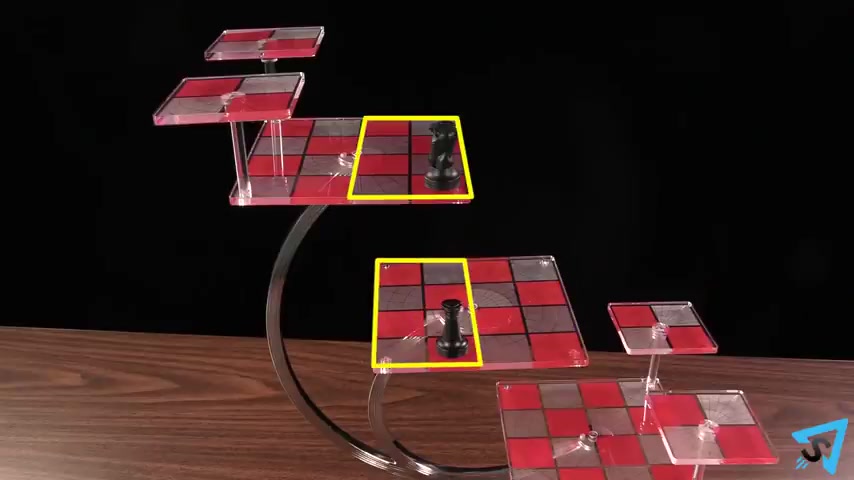
With the following considerations when moving a piece laterally along the horizontal plane of a board , the squares located directly above or below each square are considered to be in the same position on a single horizontal plane .
It is as if you are above looking down and treating all the individual boards as one single chess board .
In this view , some of the squares would be allowed to hold multiple pieces simultaneously , flip the view back to three dimensions .
And you can see how this is possible because of the vertically overlapping boards .
Typically squares will only have two boards overlapping .
However , due to the moving location of attack boards , you can have up to four boards overlapping .
The number of overlapping squares determines how many pieces can share that square within the vertical space .
A piece may change levels .
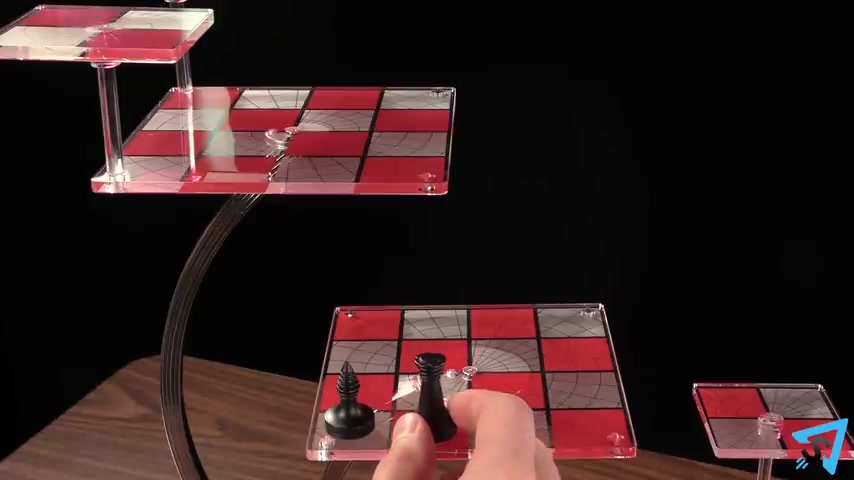
So long as the horizontal path of that piece's normal move is legal regardless of its vertical movement to move a piece to a different level , that piece must first move along its horizontal path one square at a time at any point on the path , the piece may be repositioned to an unoccupied square above or below the very next square on the path .
Then the horizontal move continues and this process repeats until the desired destination square is reached .
Pieces may not change boards while staying on the same square .
They must move horizontally as well .
A piece may leave the edge of a board .
If there is an unoccupied square above or below the imaginary void square , the piece is moving to move that piece to that physical square , then you may continue its horizontal move .
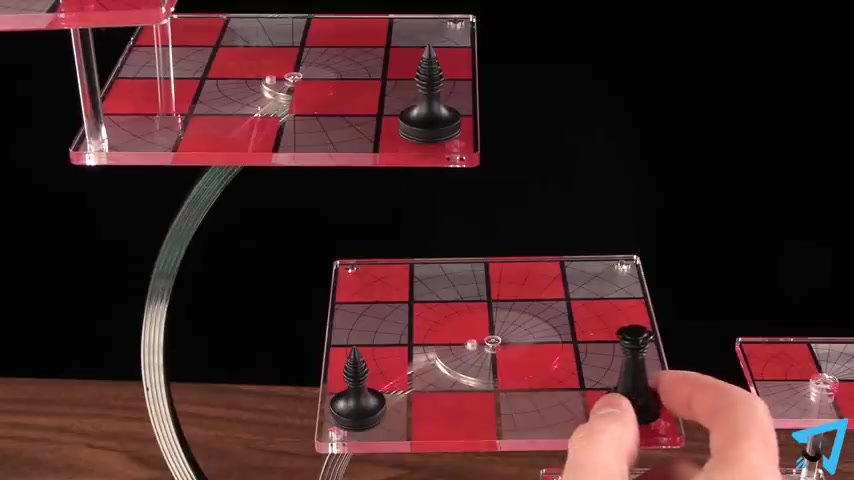
Pieces may not travel into the void .
Beyond that next single square , you must always calculate the path of a movement one square at a time following these movement rules .
Once a piece leaves a level , it may not return to that same level in the same move , a rook can travel up multiple boards in a single move in a very specific way .
So as to dodge several pieces that are in the way , if there is a wall of pieces on the same vertical square , blocking the path , pieces may not travel into the void to dodge it .
Knights are one of the exceptions , they are allowed to jump through the void so long as they land on a physical square .
The second exception is that queens and rooks are allowed to travel across void space from one attack board to another attack board .
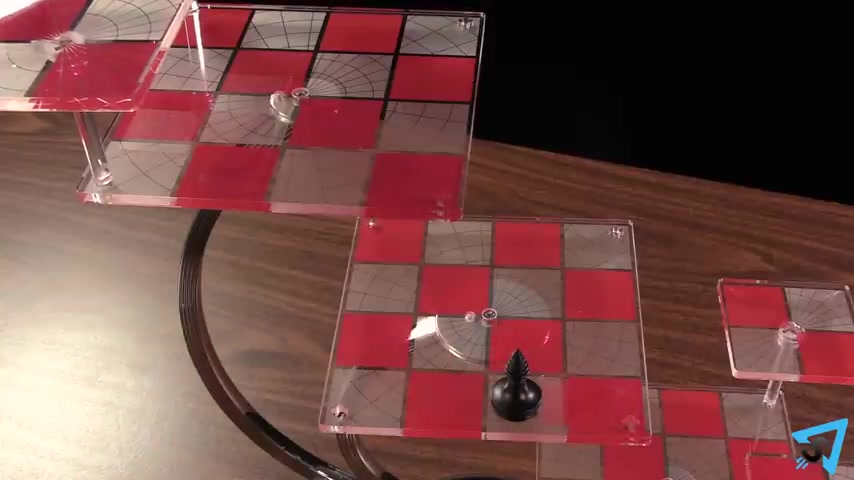
This type of move is only allowed over the void .
You are allowed to capture an opponent's piece that is on a square on any board level , you can move to pawns are allowed to capture diagonally across levels .
Pawns that start the game on your attack boards still have their double step move option .
Unless the attack board moves , then they lose it a pawn that moves to the start position of another pawn also loses their double step move .
Option .
Ponds may not travel on an attack board backwards .
A pond may move an attack board sideways so that their forward movement stays the same , but they may not move an attack board sideways while rotating at 180 degrees .
Pawns promote when they reach the back row of your opponent's main board .
Or if they reach the back square of an attack board that is on your opponent's rear pin .
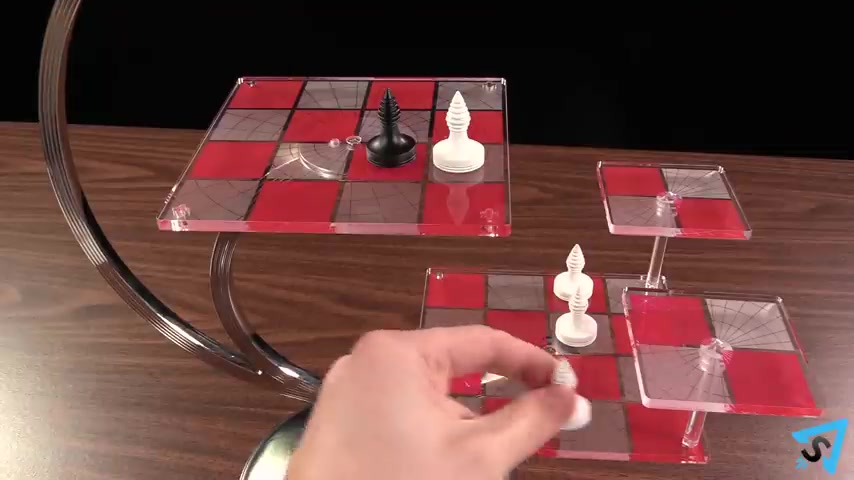
A pawn still promotes .
If it is in the correct position during an attack board , move on Paan is allowed like normal across levels .
It does not matter which level your opponent's pawn moves to .
If that pond double steps past a square , your pawn could capture , you can use on Paan picking which level your piece ends on .
You are allowed to castle under the normal conditions to castle .
Kings side , swap the positions of your rook and king to castle queen's side .
Move your king adjacent to your rook , then move the rook to the square where your king started .
You are not allowed to castle on your first turn .
The first player to checkmate their opponent wins .
Are you looking for a way to reach a wider audience and get more views on your videos?
Our innovative video to text transcribing service can help you do just that.
We provide accurate transcriptions of your videos along with visual content that will help you attract new viewers and keep them engaged. Plus, our data analytics and ad campaign tools can help you monetize your content and maximize your revenue.
Let's partner up and take your video content to the next level!
Contact us today to learn more.